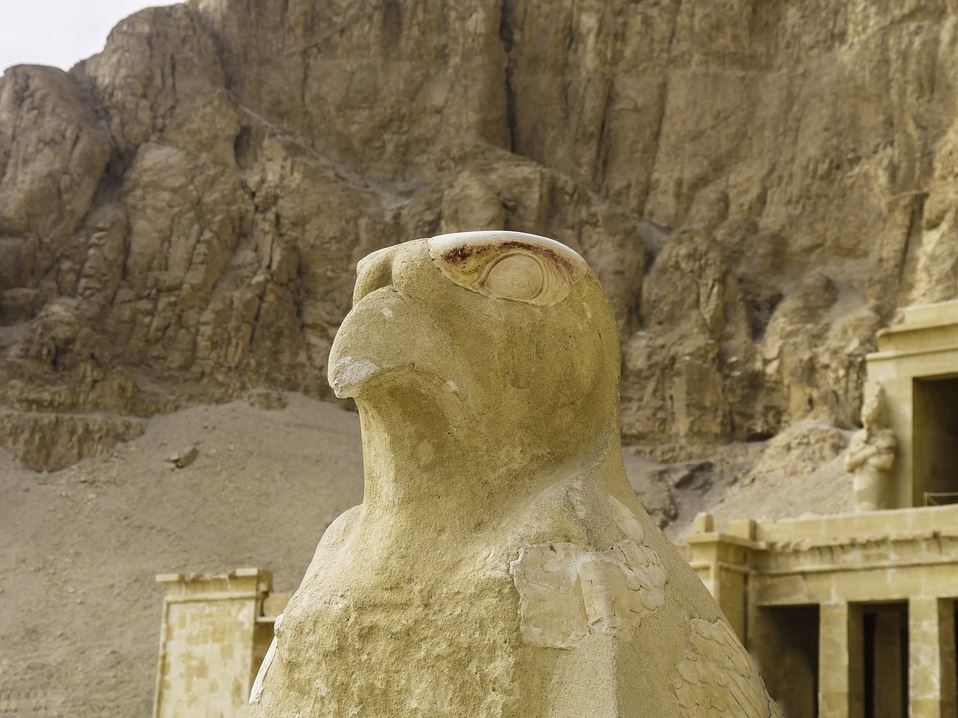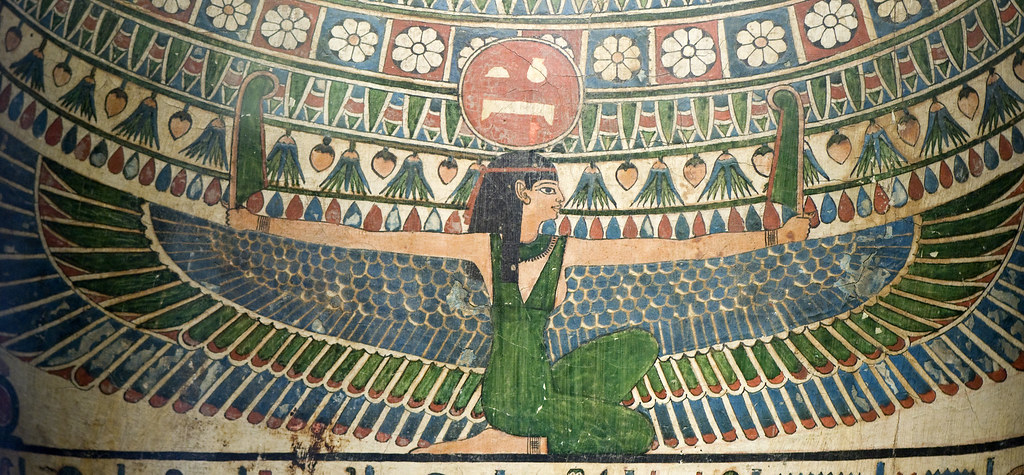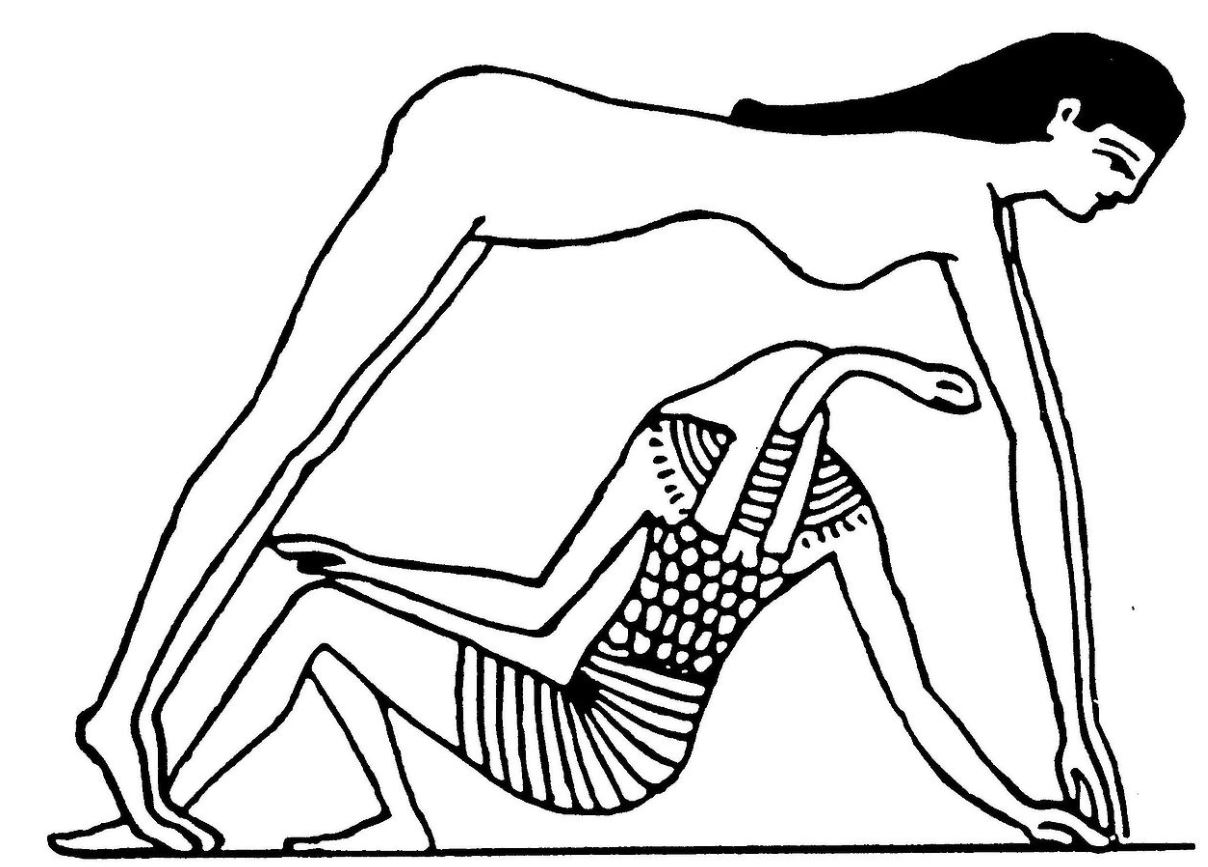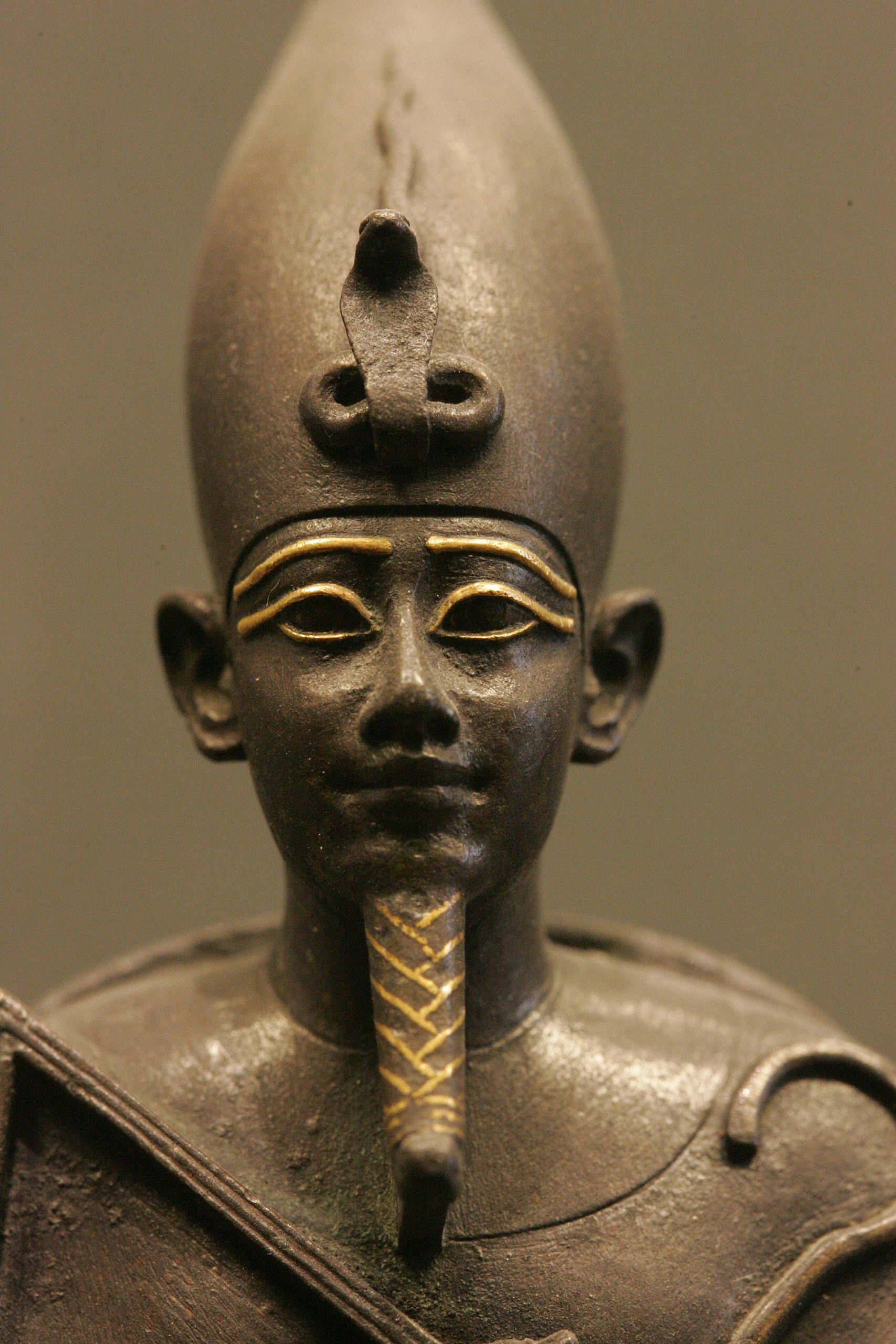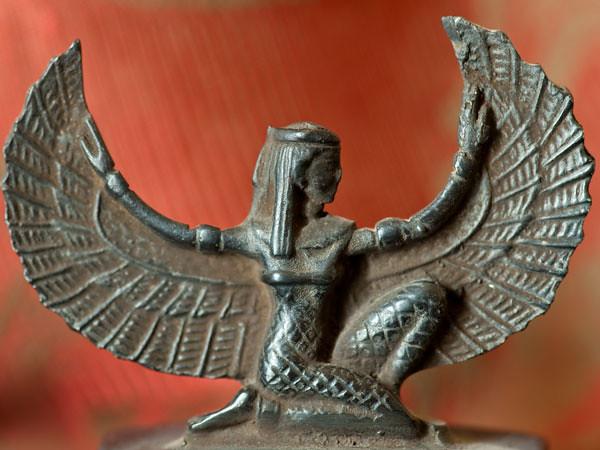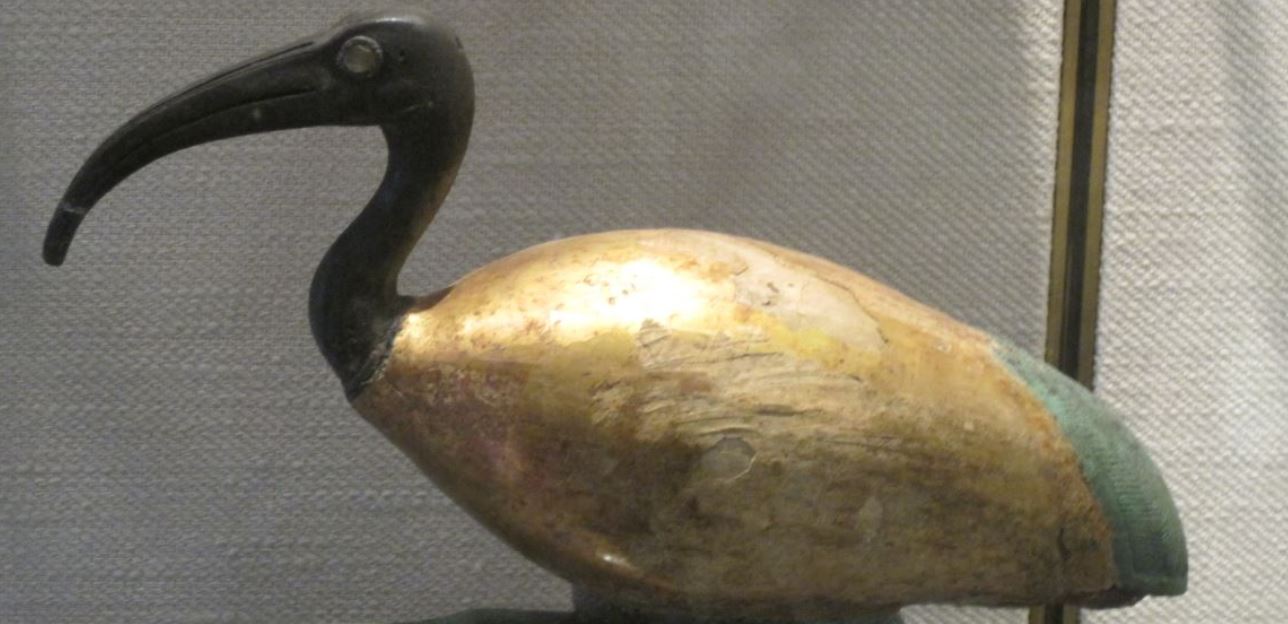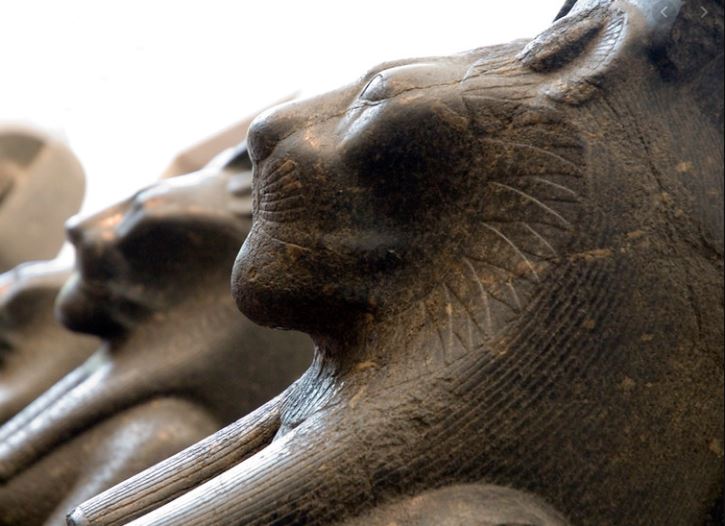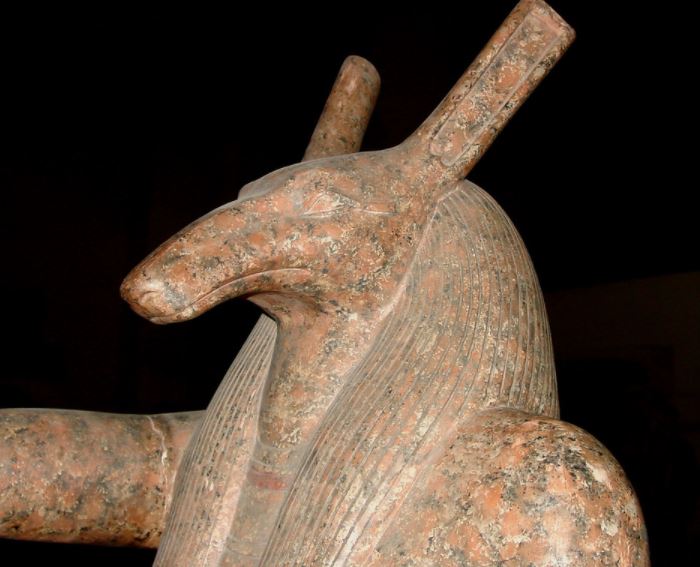Hathor, the Egyptian Goddess of Love and Beauty
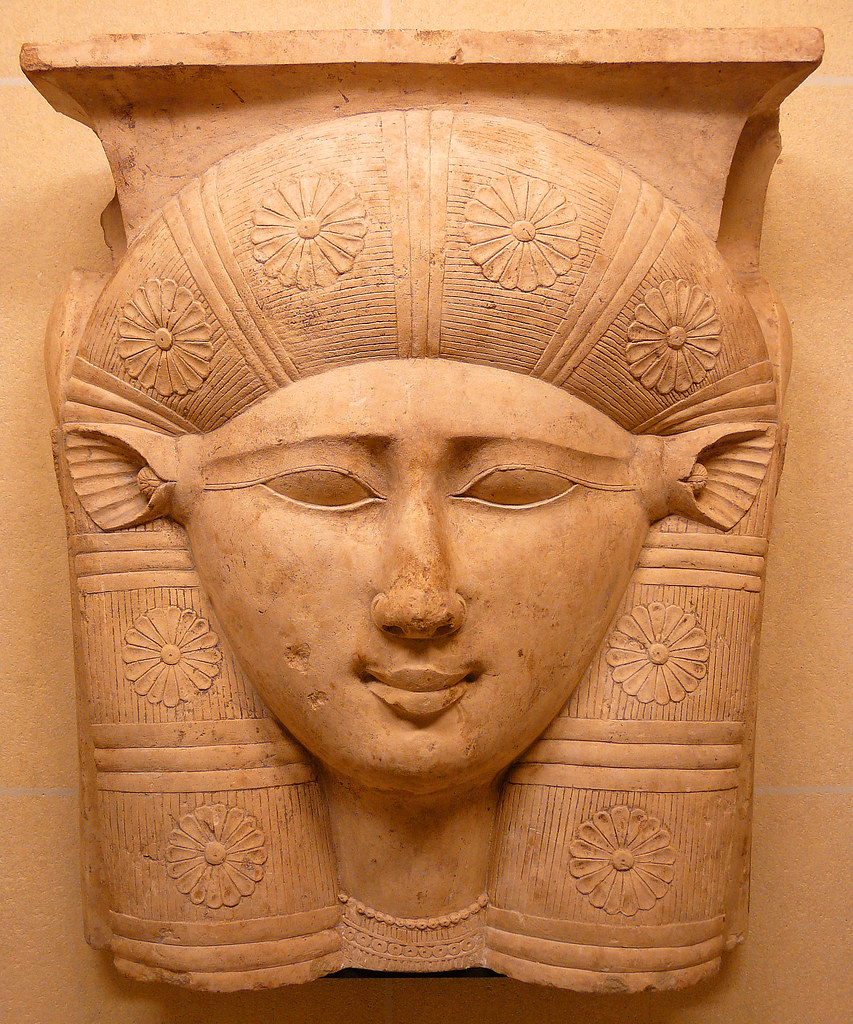
Of the many different gods and goddesses that were worshipped in ancient Egypt, Hathor is considered one of the most important.
Hathor is the Egyptian goddess of love and beauty and her history is quite peculiar among the many that are around in the Egyptian pantheon.
The Egyptian goddess of beauty and love is the daughter of the sky goddess Nut and the god of the sun and creation, Ra.
Hathor is not only the daughter of Egypt’s main deities for she is also the ‘eye of Ra,’ the most powerful force in the world. This makes her one of the most significant deities in Egyptian mythology.
Egyptian goddess Hathor – meaning of her name
The name of the Egyptian goddess of love and beauty, Hathor, translates to “house of Horus”. This is no coincidence because it refers to her role as the mother of the sky god.
Although her center of worship is in Dandarah, also known as Dendera, a city located in the south of Egypt, her cult reaches the entire realm, increasing her role as a goddess.
Apart from beauty and love, the Egyptian goddess Hathor is also considered to be the goddess of the sky, fertility, music, dance, birth, and death.
History of the Egyptian goddess Hathor
The worship of the goddess Hathor, a prominent deity in Egyptian religion, can be traced back to as early as pre-dynastic Egyptian times, significantly influencing both the Old Kingdom and the Middle Kingdom.
Before 3000 BC, the dwellers on the banks of the river Nile worshipped a deity that takes the form of a cow. Just like the qualities of a cow, they associated this deity with nourishment and motherhood.
Hathor, often depicted with Hathor symbols like the sistrum, was revered not only for these maternal attributes but also for her role in music and dance which were vital in the festival celebrations of ancient Egypt.
It was in 3000 BC in the archaic or early Egyptian dynastic times that this deity was designated a name that will leave a mark in the history of Egypt. Known for her powers as the Eye goddess, Hathor was also linked to the divine aspects of the monarchy, embodying the protection and nourishment the pharaohs sought for their reign and the afterlife.
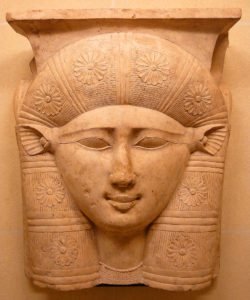
Hathor transformation and the Eye of Ra
In “The Book of the Heavenly Cow,” Ra appointed Hathor to carry out his vengeance on mankind.
It all begins when mankind lost their faith in Ra and schemed to remove him from power. When Ra learned their scheme, he gathered all the gods to counsel him.
Nun, one of the oldest Egyptian gods, suggested that he release the power of the Eye of Ra to bring wrath to the world.
The Eye of Ra is an extension of Ra’s destructive powers that acts as a separate entity and it is used to defend Ra from any agent that threatens his government.
It was considered a representation of the heat of the desert sun, which was considered very severe.
In Egyptian mythology, we will also find along with the Eye of Ra, the Eye of Horus. These two concepts were used to represent the sun and the moon, respectively.
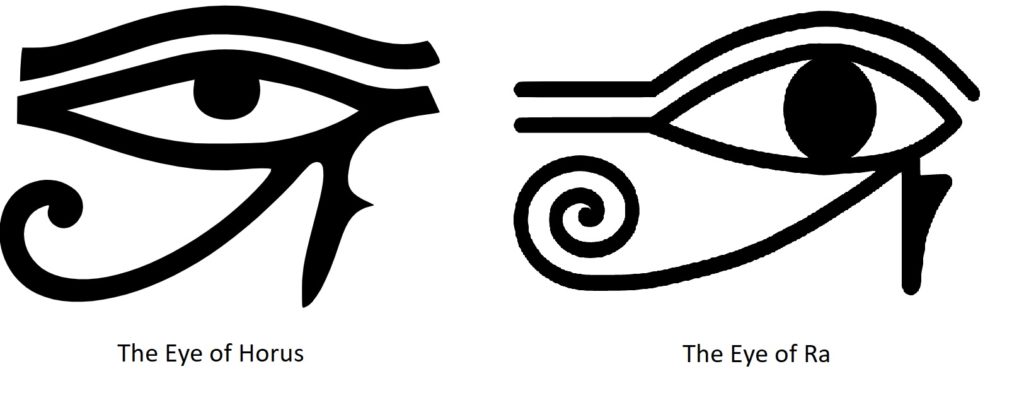 Here you can see a representation of both the Eye of Horus and the Eye of Ra
Here you can see a representation of both the Eye of Horus and the Eye of Ra
As Ra assigned Hathor to be his Eye, the Egyptian goddess of love and beauty embodied and controlled the power of the sun that transformed her into Sekhmet, a warrior goddess that is depicted as a lioness.
After slaughtering more than a thousand men, Ra felt remorseful of his decision and ordered Sekhmet (which was the Egyptian goddess Hathor transformed due to the powers of the Eye of Ra) to stop the killing.
However, the power and rage of the Eye of Ra consumed Hathor and she could not stop the killing. To finally put an end to the slaughter, Ra ordered to color several thousand jars of beer and pour it to flood the Egyptian city of Dandarah.
When the Egyptian goddess Hathor saw the red beer, she drank it thinking it was the blood of the men she slaughtered. Hathor then became intoxicated and passed out.
As she woke up, the power and rage that consumed her vanished and the legend of the celebrated goddess began.
Egyptian goddess Hathor powers
The Eye of Ra and the power of eternal youth
The Eye of Ra remains to be the power that is most associated with the Egyptian goddess of love and beauty. And, as we have previously stated, the Eye is an embodiment of the sun and its destructive force.
Unlike the Greek gods, Egyptian gods and goddesses are only half immortal. In particular, one of the most particular things about the Egyptian goddess Hathor powers is the ability to live thousands of years without losing her youth.
The role of Hathor
The Egyptian goddess of love and beauty is also the goddess of the underworld. She welcomes the dead as they reach the underworld and serve them food and drinks. If you want to learn more about Anubis, the judge of the deads, you can do so in this article here.
Hathor and demons
When Horus gave Hathor the bracelet of 42 stars, it served as her amulet against the demons that are after her and it gave her the ability to transport herself back to the realm of man.
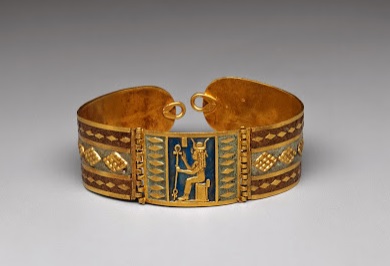
Hathor bracelet of 42 stars
>
Just like Aphrodite in the Greek Pantheon, Hathor’s powers also include Amokinesis, the power to control or manipulate the minds of men.
This connection with mental manipulation links her with the Eye of Horus, an ancient Egyptian symbol representing protection, royal power, and good health.
Why is Hathor hunted by demons?
A less known aspect of Hathor’s narrative involves her being pursued by malevolent forces or ‘demons’.
This dimension of Hathor’s mythology is both intriguing and revealing of the spiritual worldview of the ancient Egyptians during the New Kingdom.
Contrary to the modern definition, ‘demons’ in ancient Egyptian culture didn’t solely represent evil.
They were powerful entities that could be malevolent or benevolent, largely operating as agents of balance in the universe. Hathor was frequently hunted by demons, reflecting the inherent balance of contrasting forces within the cosmos, and often portrayed alongside Isis and Osiris in ancient Egyptian religion.
The concept of Ma’at, or the universal balance, was a cornerstone of Egyptian belief. This cosmic equilibrium required a balance between chaos and order, light and darkness, and in Hathor’s case, joy and sorrow.
Therefore, Hathor’s constant pursuit by demons can be seen as a reflection of this ongoing cosmic dance, this constant seeking of balance within the universe.
The mythical pursuit of Hathor thus serves as a rich metaphor for life’s inherent challenges and the cyclic nature of existence.
The tale of Hathor also involves her transformation into the Distant Goddess, who leaves the sun god Ra and returns only after being appeased, which directly ties to her powers as an Eye goddess of the sun and sky.
Egyptian goddess Hathor Symbology
Hathor goddess symbol: the cow
Since the pre-dynastic Egyptian times, the goddess has been honored to represent the “Sacred Cow.” The ancient dwellers of the banks of the Nile river respected the nurturing and motherly nature of the cows.
Thus, associated their deity with it, and to honor her, they would offer papyrus reed. Also known as Nile grass, it is a species of aquatic plant consumed by the cows grown in the Nile banks.
This is one of the most common Hathor offerings.
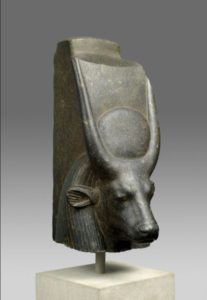 Representation of Hathor Egyptian goddess as a cow
Representation of Hathor Egyptian goddess as a cow
Hathor goddess symbol: the Eye of Ra
Hathor was often depicted with the Sun Disk nestled between her cow horns, symbolizing her divine connection to the sky and the Sun God Ra.
This iconic symbol of Hathor, emblematic of the royal and divine, illuminates her integral role in the Ptolemaic and New Kingdom eras of ancient Egypt.
The sacred serpents or the uraeus is a common Egyptian emblem that symbolizes supreme power, akin to Hathor’s symbol in the headdresses of Egyptian deities and pharaohs.
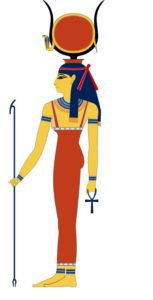 This is the Egyptian goddess of beauty in her human appearance
This is the Egyptian goddess of beauty in her human appearance
Hathor goddess symbol: the lioness
In Egyptian art, the Egyptian goddess of love and beauty is also depicted as a lioness, symbolizing her dual nature as both nurturing and formidable.
This is associated with her past when she took the form of Sekhmet during the early mythological battles, embodying the Eye of Ra with the head of a lioness and the body of a human.
Hathor’s appearance as a lioness symbolizes strength and protection, and Hathor was sometimes equated with the sky, emphasizing her role as a protector of Upper Egypt.
Some facts about the goddess Hathor
As the goddess that embodies the nurturing quality of the sacred cow, it is believed that the Egyptian goddess Hathor nurses every newborn pharaoh to give them divine nourishment.
It is the reason why pharaohs are considered as god-king and are referred to as, sons of Hathor. According to other versions, the Eye of Ra Hathor was tasked to find the vanished sons of the supreme gods.
Known for her powers, Hathor was the divine mother who played a critical role in the myth of Osiris and the living and the deceased.
The goddess found the children but upon their return, she found out that Ra created a new Eye.
It aggrieved the goddess and when she shed her tears, her teardrops gave birth to men. This profound connection with birth and rebirth is celebrated annually in the Beautiful Festival of the Valley, linking the living and the dead through communal feasting, drinking, and dancing.
This is why the ancient Egyptians would pray to the Hathor altar for help during childbirth, invoking her powers as both the mythological mother and a symbol of fertility.
Hathor Influence in Egypt
Hathor is an Egyptian goddess with a cult that stretches wider than the realm.
Compared to the other Egyptian deities, she’s able to earn worshippers and followers even from far-off lands.
Of all the ancient structures in Egypt, Hathor’s temple in Dendera in the south of Egypt is the most preserved and well-maintained.
It is a standing structure that celebrates the 5000-year legend of Egypt’s goddess of love and beauty. Often linked with Horus and Hathor, the temple walls depict their union, which represents the synthesis of several vital aspects of ancient Egyptian religion.
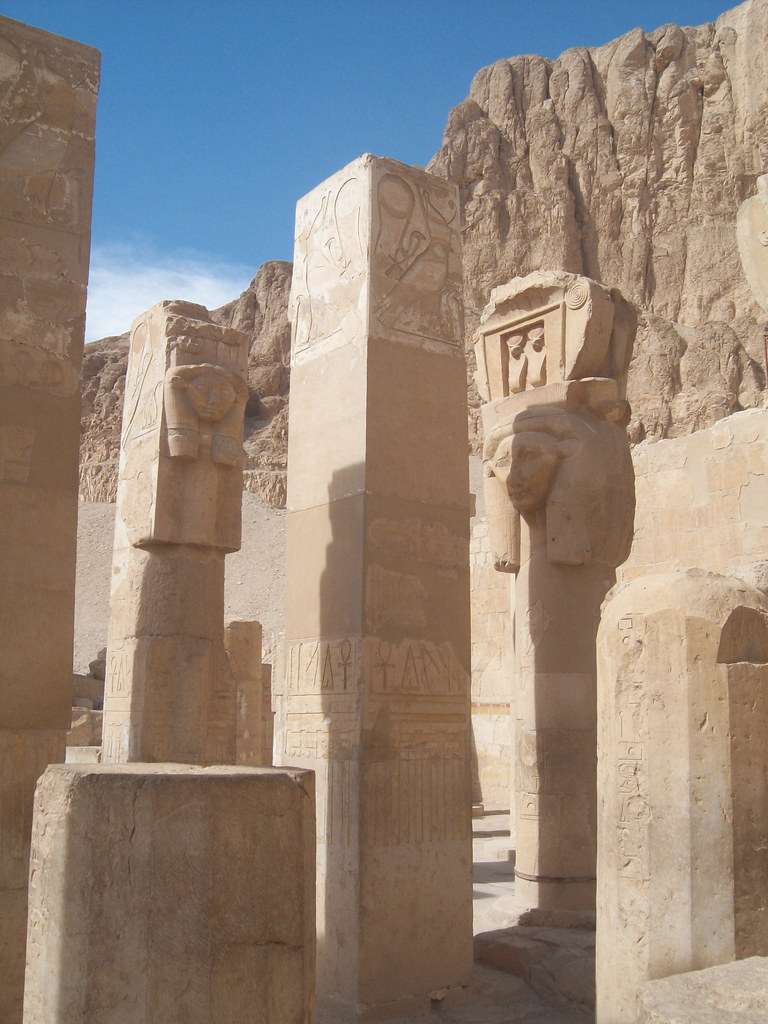
This is one of the temples dedicated to the Egyptian goddess Hathor, located in the southern part of Egypt, where the cult of the goddess was centered.
Influence of other cultures over the Egyptian goddess Hathor
As the cult of the goddess Isis grew in numbers, Hathor’s followings and worshippers diminished.
However, when Alexander the Great conquered Egypt, the Egyptian goddess of love and beauty Hathor rose to popularity again.
The integration of cultures under Alexander’s rule saw a blending of Greek and Egyptian traditions, further enriching the Egyptian calendar with celebrations that highlighted Hathor’s connection to fertility and motherhood.
The Greeks respected the religion of the Egyptians and they have developed a particular liking for the goddess Hathor.
They associated the goddess with Aphrodite, the Greek goddess of love and beauty. This connection was often depicted in the portrayal of Hathor and Aphrodite, where dance and music were integral to their worship.
When the Romans dominated Egypt, Hathor’s popularity rose yet again because she was associated with Venus, the Roman counterpart of Aphrodite. These associations caused the Egyptian goddess of love and beauty to emerge from the shadows of Isis to take her rightful throne in the hearts of men.
The Roman influence also celebrated the myth of Osiris, where Hathor played a crucial role as a protective deity guiding the deceased.












